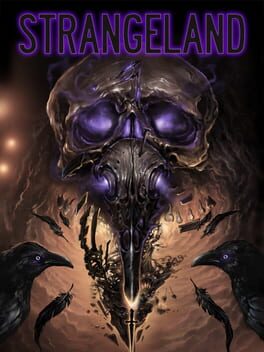Not to be cute or anything, but this really is one of the strangest games I’ve played this year. Not in terms of the affectations that it puts on, its aesthetic ambiguity/distance from the norm and that which it subverts, because as we’ve begun to see with nostalgic recreations/realisations of the impressionistic lenses we viewed older PSX and 1-bit graphical works with, the aesthetic plasticity that games manage to command coherency with is aggressively broad and getting broader every day; it’s strange for the fact of its singularly most remarkable strength being that it writes dialogue with a mostly consistent and interesting lens of euphonious first principles. Games writing, as commonly bemoaned for being subpar as it is uncritically and unsubstantially championed against other media’s language, is not known as broadly being something which draws new players to the medium nor what keeps players around. There are outliers, Torment, KRZ, Disco Elysium, but they prove the rule: games writers typically have an enormously difficult time putting scripts into their works which harness the broadness and depth of language commensurately with any media which has allotted spoken or written communication in their art. Canned dialogue, utilitarian conveyance from justification to justification, is the expectation that is most often held and only sometimes met. Despite this however, the macro writing of games, at a AAA level a bit more and at the indie level a bit less, actually works on a functional level which many American films and genre fiction novels fail to achieve (although it is indie games which more often prove the writing rule wrong well as being the game sphere who have more immediate goals of furthering design ideas entirely divorced from traditional narrative and dialogue, so while they are often less seen on 2nd base, it’s usually because they hit homers or aren’t at the stadium). The reasons for progressing through points A, B, and C on the way to Z are hit with decent grandeur. This is a function of editorial, mechanised production, but is nonetheless impressive enough to be noted, especially considering that games are meant to juggle narrative justification with a rote gameplay loop which, in its repetition, cannot be seen as a reliable force for development. This somewhat consistent proficiency of games generally is part of what makes Strangeland such an outlier: its macro-writing is horrible, worst in class pap that manages to sink below not only the high grade of adventure games, which alongside RPGs are usually the best examples for games writing at both the macro and micro level, but also down into and beyond the depths of rushed FPS campaigns and mobile puzzle games. But, the writing on a line to line level is legitimately tuned to the patter, rhythm, and musicality of speech seen in many good romantic and modern poets: often in Strangeland, a line sings with a macabre and tortured appetite such as those written by Dylan Thomas, Rimbaud, or Anne Sexton. The grand-scale editorial writing is largely nonfunctional as games writing, at its worst when functioning as the brilliant summarised “puzzles as plots” definition by Ian Danskin, but it never feels against the grain of what games writing should contain when placed within the context of its lovely prose, which is to say that they never feel migrated from a poetry collection or intimate film scene.
There are small other successes in Strangeland, certainly the pixel graphics are a secondary, if less spectacular, achievement. In failures though, the game is plentiful. The puzzle designs are both barren and simple, issuing for the Stranger a path which is easily tread, features no compelling thought, and is shorter than a good exercise outing should demand. At around 2-3 hours, Strangeland somehow finds time to make a weak impression across nearly all of its facets. But, the writing is so surprisingly well founded at the level of sentences that following the team is an easily justifiable and worthwhile endeavour.
There are small other successes in Strangeland, certainly the pixel graphics are a secondary, if less spectacular, achievement. In failures though, the game is plentiful. The puzzle designs are both barren and simple, issuing for the Stranger a path which is easily tread, features no compelling thought, and is shorter than a good exercise outing should demand. At around 2-3 hours, Strangeland somehow finds time to make a weak impression across nearly all of its facets. But, the writing is so surprisingly well founded at the level of sentences that following the team is an easily justifiable and worthwhile endeavour.
